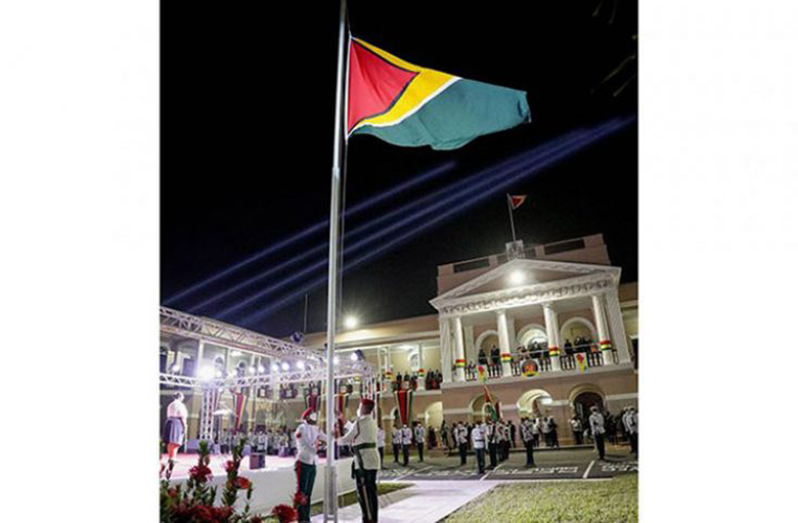OCTOBER 5, 1992 marked the day that democracy was restored to Guyana; a day widely regarded as the advent of free and fair elections in post-Independence Guyana.
On that day, the People’s Progressive Party (PPP) ended the 28-year-long stranglehold the People’s National Congress (PNC) had on the country, by winning 53.5% of the votes cast, which at the time equated to 28 of the 53 seats in the National Assembly, and providing in the process the platform for them to win five successive governments.
As Attorney-General and Senior Counsel Anil Nandlall recalled, with the absence of freedom and the feeling of being stifled by economic hardships, Guyana was a dim place to live in under the undemocratic rule that prevailed before 1992.
“As a young man, I didn’t see a future [and] for every young person,” he stated.
He made these remarks while speaking on a special programme aired on Thursday last to commemorate the return of democracy in 1992, when the PPP was voted into office.
Without the fight for freedom, according to Nandlall, today, Guyana would have been ostracised like it was prior to 1992.
“By 1992, we were completely bankrupt; Guyana, by that time, had become a basket case. We were the second poorest country in the world in this hemisphere; the medical system had collapsed, the infrastructural system had collapsed, the educational system had collapsed,” he said.
Describing the period at reference as “miserable and dismal”, another PPP/C executive member and Minister of Parliamentary Affairs, Gail Teixeira, also recalled the extreme levels of poverty, and the abnormal health conditions that plagued children.
While addressing the collapse of key sectors and the inheritance of a crumbling economy, she stated: “…When you look at 1992, I was the Minister of Health and I showed in Parliament, the theatres and the public hospital that had broken equipment…you can imagine what was going on with operation [and the] infections.”
As she relived the dark era, she spoke extensively on the rapid migration in Guyana at that time because of the economic constraints.
“…People were really punishing and [they] were also migrating because they were looking for anywhere to go…Looking back, it was dark.”
With the PPP/C continuously fighting to restore the rule of law, it is now sunny skies and beaming smiles, according to Teixeira.
“…It is colours and progress and you know, the differences are so stark and so palpable,” she related.
Urging Guyanese not to dismiss the threats to democracy that occurred in 2020, Teixeira said: “The whole entire architecture of Guyana has been constructed and developed [by] the PPP/C government and [it] has been undermined in the 2015-2020 period when they [APNU+AFC] were in government.”
With a democratic country being defined as a system of government in which the people have the power to participate in decision-making, Teixeira emphasized that democracy must always be safeguarded not just by the PPP/C but by all Guyanese, regardless of race, political affiliation or any other difference.

FREEDOM
Teixeira also spoke about the 2020 General and Regional Elections, where Guyana almost suffered the same fate prior to 1992 – a period of rigged elections.
Snap elections were held back in 2020 after the government of President David Granger lost a vote of no confidence by a margin of 33–32 on 21 December, 2018.
Although Election Day and the initial count were deemed to be free, fair and credible, the process of tabulating the votes was widely seen to have been fraudulent.
Leaders had later agreed to a recount of ballots, which was completed in June of that year. The recount showed that the PPP/C party won the most votes, with a bare majority of one seat.
However, representatives of the then A Partnership for National Unity (APNU) and Alliance For Change (APF) government had sought to thwart the results of the recount through a number of court cases.
Despite this, the Court of Appeal ruled that the results of the recount be utilised as the official results of the election. And six months later, Dr Irfaan Ali was sworn in as the 10th President of Guyana.
Further reflecting on the struggles Guyana faced, Clement Rohee who was at the time the country’s Minister of Foreign Affairs Minister, explained that Guyana was riddled with foreign debt and these were categorized.
“The government worked very hard to address and seek debt relief in respective to bilateral debt, the multilateral debts, however, an extremely important type because this is where the multilateral lending agency would have lent money to the government,” Rohee explained.
In the subsequent years, under the PPP stewardship, Guyana moved from a low-income country drowning in debt to a country on the rise, with one of the lowest debt-to-GDP ratios in the world.



.jpg)








